OVERVIEW
01
THE BERLIN WALL
DIVIDES EUROPE
By August 1961, the Iron Curtain that symbolically divided Europe in two, is made real with the building of the Berlin Wall.
READ THIS PART
02
A NEED FOR FOREIGN LABOUR
IN THE WEST
An economic boom in Western Europe creates a need for foreign labour.
In Britain, the British Nationality Act of 1948 had already brought a number of migrants from Commonwealth countries.
In France, Germany, Belgium and the Netherlands, large-scale guest worker programmes are established, leading to an influx of foreign labour.
READ THIS PART
03
A CREAKING COMMUNIST AUTHORITY
IN THE EAST
The failed Prague Spring of 1968 showed the limits of peaceful protest in Eastern Europe. Those living under communist rule got by keeping to a strained status quo.
READ THIS PART

THE BIG PICTURE: THE MAKING AND BREAKING OF EUROPE
01
The Berlin Wall divides Europe
>
Border guards on opposite sides of the Berlin Wall, viewed from the western side. | PHOTO BY CLELAND RIMMER/GETTY IMAGES
FACT
THE BERLIN WALL
01
Between 1945 and 1961, an estimated 2.5 million people had flooded into West Berlin.
02
The first barrier for the Berlin Wall was constructed overnight on August 12, 1961, in an effort to stop East Germans defecting.
03
On August 13, 1961, Berliners awoke to find themselves separated from friends, family, work and even their homes. In the coming weeks and months, the initial wire barrier was strengthened with concrete walls and guard towers.
04
It did not just go through the centre of the city – it completely encircled all of West Berlin, which was surrounded by the Soviet-controlled German Democratic Republic (GDR).
click to expand
Eastern Europe was closing itself off from the West.
But at that same time, the West was opening up to the rest of the world.
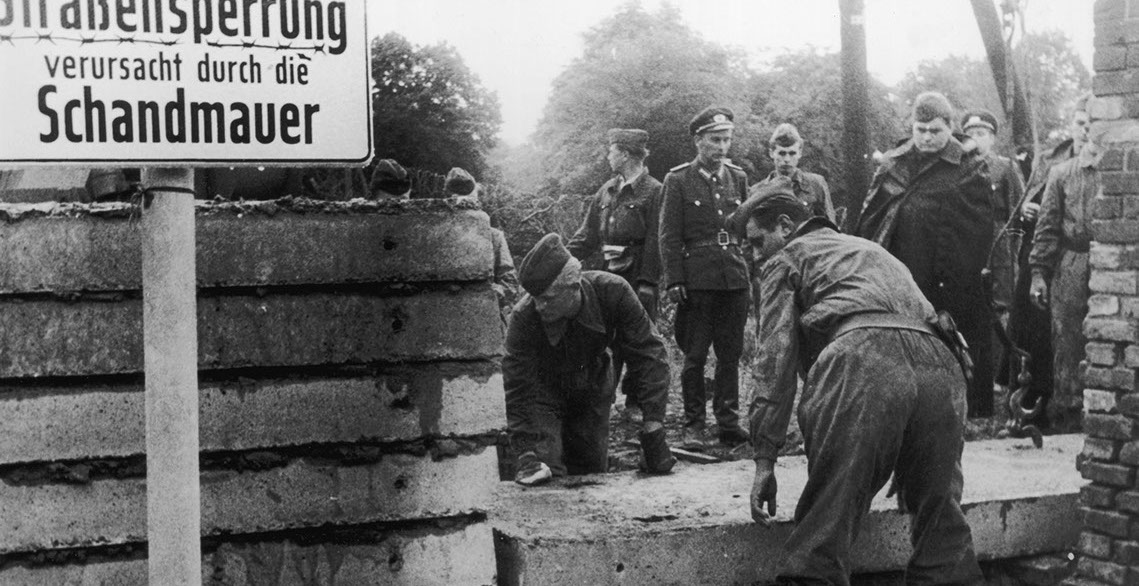
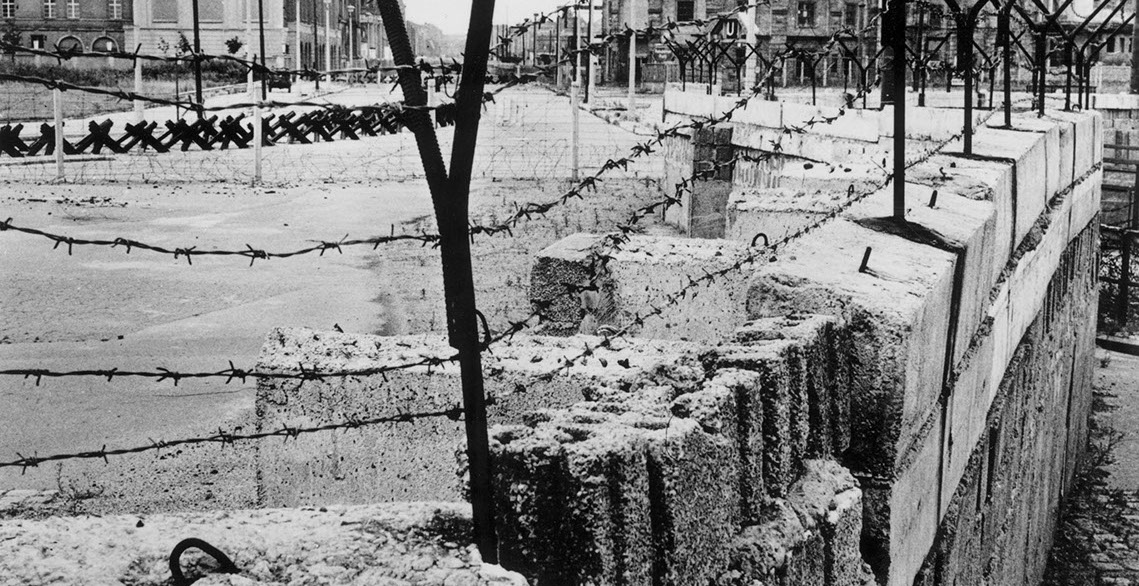
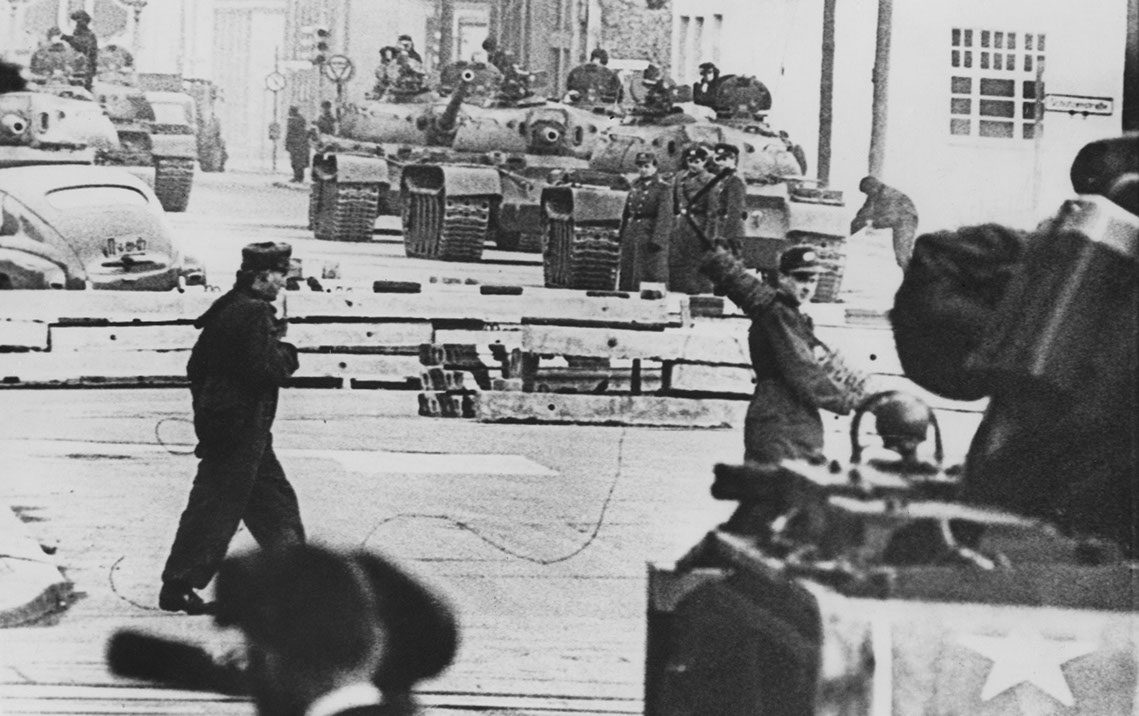

1961: Soldiers building the Berlin Wall as instructed by the East German authorities, in order to strengthen the existing barriers dividing East and West Berlin. | PHOTO BY KEYSTONE/GETTY IMAGES
August 1962: A section of the Berlin Wall at Potsdamer Platz maintained by the German Democratic Republic between 1961 and 1989. | PHOTO BY CENTRAL PRESS/GETTY IMAGES
Russian (background) and American (foreground) tanks face each other at the Friedrichstrasse checkpoint in Berlin, during the construction of the Berlin Wall, 28th October 1961. | PHOTO BY KEYSTONE/HULTON ARCHIVE/GETTY IMAGES
Soldiers of the East German National People's Army (NVA) erecting barbed wire fences to close off a street in preparation for the construction of the Berlin Wall, Berlin, Germany, 14th August 1961. The first concrete emplacements were erected on 17th August. | PHOTO BY KEYSTONE/HULTON ARCHIVE/GETTY IMAGES
1 - 4
<
>
02
A need for foreign workers in the West
>
West Indian immigrants arriving at Southampton in the UK. | PHOTO BY EVENING STANDARD/GETTY IMAGES
“We must be mad, literally mad, as a nation to be permitting the annual inflow of some 50,000 dependants”
ENOCH POWELL
INTERVIEW
“It initially started from Southern Europe and so countries like Germany and Belgium in particular and France would get people from Italy, Spain, Portugal, Greece. But by the late 50s, early 60s there were simply not enough people and they reached out to other countries, mostly North Turkey and Morocco.”
Cas Mudde
WATCH
INTERVIEW
“There was a need for labour, and so central Europe was able to absorb, for example, the 12 million German expellees from Eastern Europe, the so called “guest workers” in Germany from Turkey, or in Britain the arrival of non-white immigrants from the commonwealth.”
Dan Stone
WATCH
BACKGROUND
BRITAIN: THE BRITISH NATIONALITY ACT OF 1948
*
During the 1950s, Britain's non-white immigrant population increased rapidly in size.
*
Immigration from the West Indies was encouraged by the British Nationality Act of 1948, which gave all Commonwealth citizens the right to live and work in the UK, regardless of their race or religion.
*
Between 1948-1962, some 500,000 non-white British subjects entered under the legislation.
click to expand
>
An immigrant employee from Pakistan at work in a spinning mill in Bradford, West Yorkshire, the worsted-manufacturing and wool-trade centre of England. | PHOTO BY CENTRAL PRESS/GETTY IMAGES
BACKGROUND
CONTINENTAL EUROPE: GUEST WORKER PROGRAMME
*
During the guest-worker period of 1958 to 1972, more than eight million work permits were issued to foreigners in Belgium, France, Italy, Luxembourg, the Netherlands, and West Germany (the original six members of the EEC).
FRANCE: Immigration flows were dominated by North Africans from former French colonies and sub-Saharan Africans.
GERMANY: There is a large recruitment of guest workers from Turkey between 1961-1973.
NETHERLANDS: From 1949-1957 immigration flows from former colonies Indonesia and Suriname during the late 1970s.
BELGIUM: During this decade there is a significant guest-worker programme that becomes more restrictive by the end of the decade.
click to expand
Europe was experiencing an unprecedented boom.
The European Economic Community (ECC) was profitably absorbing foreign workers while keeping Britain out of its increasingly wealthy club.
BACKGROUND
BRITAIN'S ENTRY INTO THE EEC
*
*
*
In 1961 Britain applied for membership of the EEC.
In 1963 and again in 1967, French President Charles de Gaulle vetoed the entry of Britain into the EEC.
Britain eventually joined in 1973, after Charles de Gaulle’s resignation in 1969.
General Charles De Gaulle, 1968 | PHOTO BY KEYSTONE-FRANCE/GAMMA-KEYSTONE VIA GETTY IMAGES
click to expand
Numbers and percentages of foreigners in certain host countries, 1954-1974
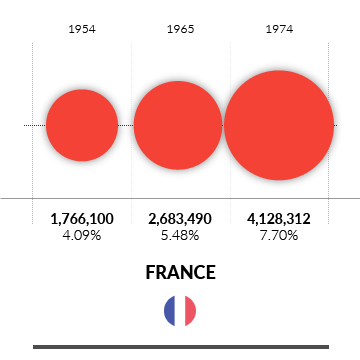

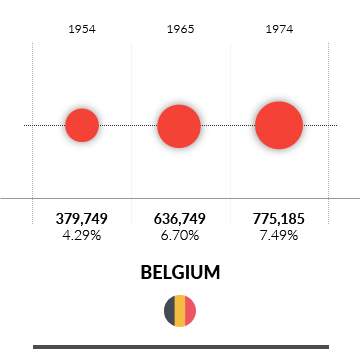

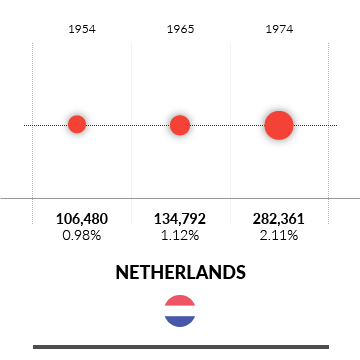
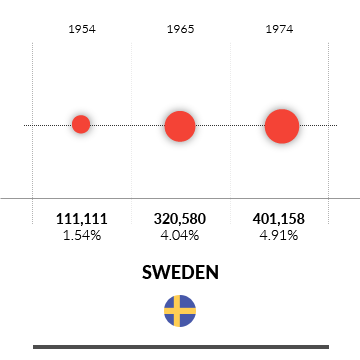
Source: Gitmez, 1983
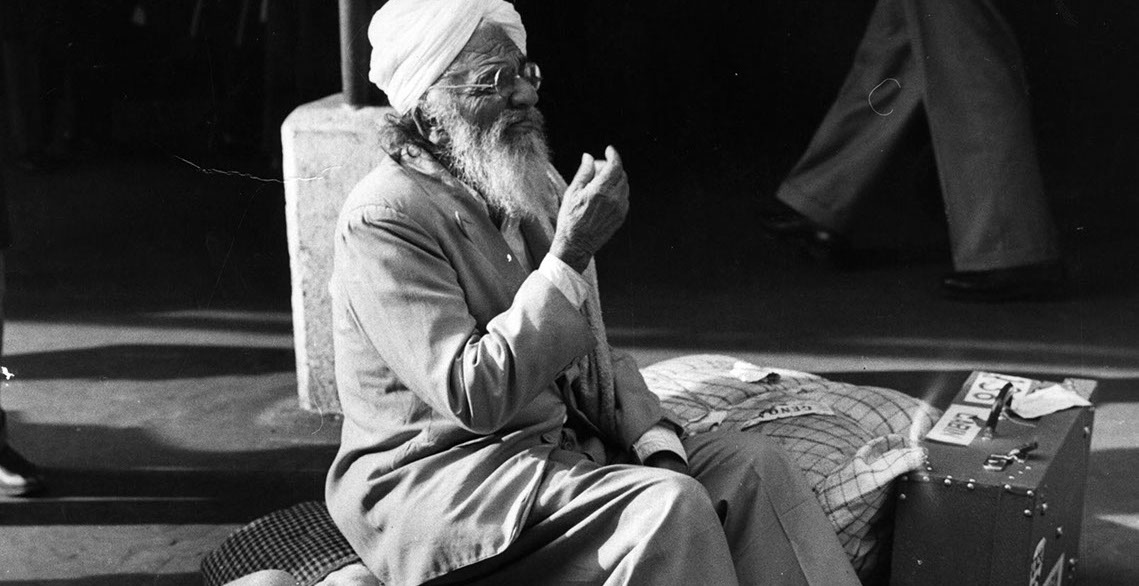
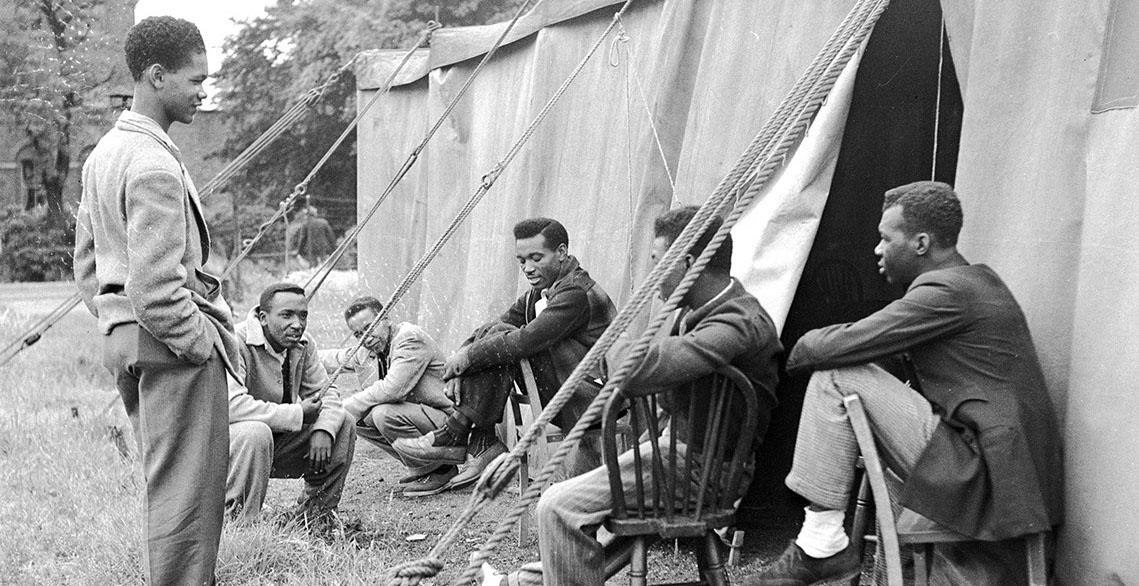
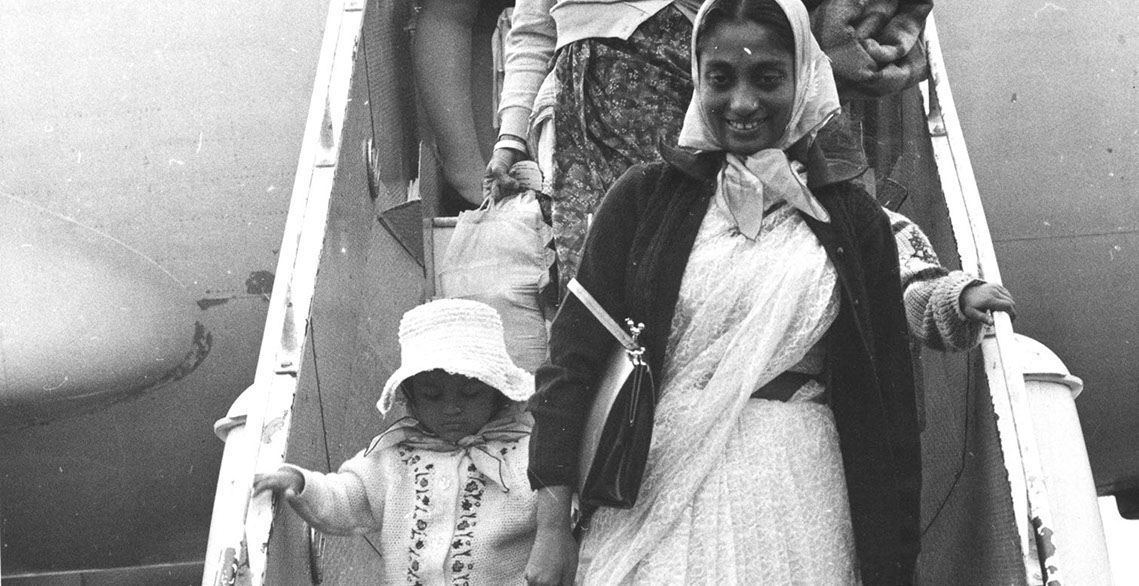
November 21, 1959: The end of a journey from India. One of the thirty seven Indians detained on board a boat at Dover is allowed to enter Britain. Here he sits at Victoria Station. | PHOTO BY HULTON ARCHIVE/GETTY IMAGES
1st July 1948: A group of Jamaican immigrants waiting outside their temporary home in Britain. They are waiting for interviews with officials of the Ministry of Labour and the Colonial Office. | PHOTO BY CHRIS WARE/KEYSTONE FEATURES/GETTY IMAGES
28th February 1968: Asian immigrants disembarking on their arrival at Stansted Airport. | PHOTO BY EVENING STANDARD/GETTY IMAGES
1 - 3
<
>
FASCIST FRINGE GAINS TRACTION
But as the British government sought integration with Europe, some considered the integration of new arrivals to Britain as a route to ruin.
In 1968, Enoch Powell, a former British government minister and serving member of the Conservative shadow cabinet, delivered a dark vision of a multicultural Britain … and handed the far right new legitimacy.
INTERVIEW
“You have people like Enoch Powell actually saying this kind of stuff. It means that groups on the fascist fringe can suddenly get some credibility, some respectability because it seems like they’re saying the same stuff as this figure, Enoch Powell. But even put Enoch Powell to one side, when you start introducing legislation, immigration laws that in their underlying premise is … is actually accepting that far right narrative, right? That Britain is a white country. Well then you have the authority of the entire political system legitimising this perspective right? And that’s really when the … you know the kind of fascist movements in Britain get their great opportunity to … to cross over into a much more mainstream place.”
Arun Kundnani
WATCH
ARCHIVE
ARCHIVE
“We must be mad, literally mad, as a nation to be permitting the annual inflow of some 50,000 dependants, who are for the most part the material of the future growth of the immigrant-descended population.”
Enoch Powell
BACKGROUND
STREET VOX POPS, UNITED KINGDOM, 1960s
“If you go back to 200 years, when the white people exploited the blacks. Now the black people have come here to exploit us… you can’t get away from it.”
“I’ve got nothing against the coloured people but I think we should keep our own country and I don’t think there is room for them here”
“I don’t like 'em I have nothing against them personally, as long as they keep to their own”
“The thing I find with coloured people is that they are illiterate and until they learn to live our standards then we can’t live with them”
“I don’t think personally I would like any of them as friends”
Source: Granada Television
click to expand
>
One of the hundreds of Kenyan Asians to arrive in Britain just before the passing of the British Government's Emergency Bill holds up his British passport on arrival at Luton Airport from Kenya. | PHOTO BY CENTRAL PRESS/GETTY IMAGES
FAQ
THE 1962 COMMONWEALTH IMMIGRANTS ACT
*
Efforts to curb immigration in Britain began in 1962 with the Commonwealth Immigrants Act.
*
In response to a perceived heavy influx of immigrants, the government tightened the regulations, permitting only those with government-issued employment vouchers, limited in number, to settle.
*
A passport holder had to be born and naturalised in the UK or have a parent or grandparent who had been born, adopted, or naturalised in the UK, a principle known as patriality.
*
What this Act effectively accomplished was the retention of the right of entry for many citizens of the “old” Commonwealth countries, such as Australia and Canada, while removing this right from the “new” Commonwealth citizens.
click to expand
One group more than any other, would seize the opportunity and prey upon public concern.
>
Members of the National Front organisation speaking to the press during their Manifesto Conference. From left to right Richard Verrall, Director of Administration, John Tyndall, National Front Chairman, Paul Cainer and Michael Saff, members of the directorate. | PHOTO BY EVENING STANDARD/GETTY IMAGES
INTERVIEW
“The National Front is founded, begins to campaign very strongly in the East End of London, in the Midlands, and in some northern towns, and it offers overt racism and xenophobia, and anti-semitism, and begins, in some areas, begins to connect with an anxious population particularly in white, working-class communities and it begins to get a bit of a mass membership”
FAQ
THE NATIONAL FRONT (NF)
*
*
The National Front (NF) is a British far-right political party, opposed to non-white immigration and committed to a programme of repatriation.
The NF was founded in 1967 by Arthur Kenneth Chesterton, merging his League of Empire Loyalists and the British National Party.
click to expand
03
A creaking communist authority in the East
>
August 29, 1968: Students burning Russian newspapers in Wenceslas Square, Prague, Czechoslovakia, during the Czech crisis. | PHOTO BY REG LANCASTER/EXPRESS/GETTY IMAGES
“In Eastern Europe what you see at this time … is the stagnation of the political system”
DAN STONE
As Western Europe was struggling to come to terms with new arrivals from distant places, in the east, Soviet power was beating back indigenous uprisings.
The failed Prague Spring of 1968 showed the limits of peaceful protest against the iron will of communist control … setting in place an uneasy ‘new normal’.
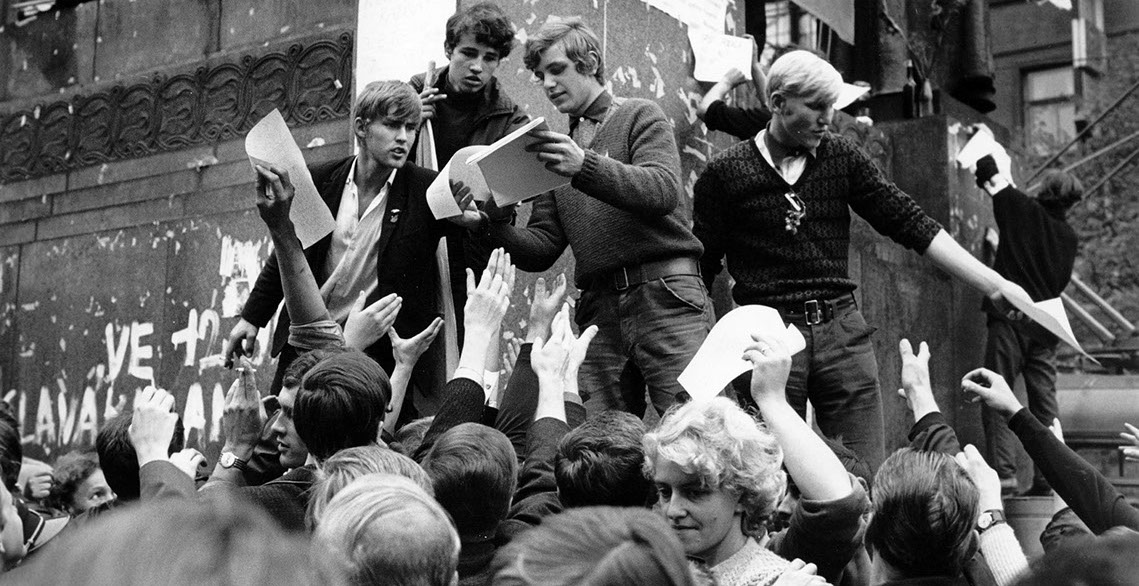
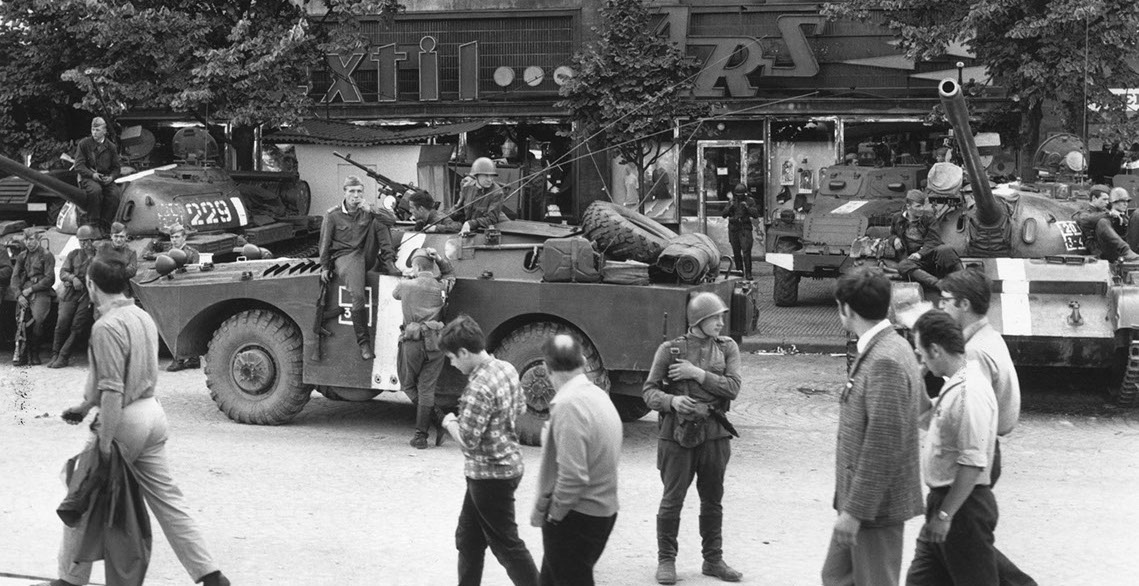
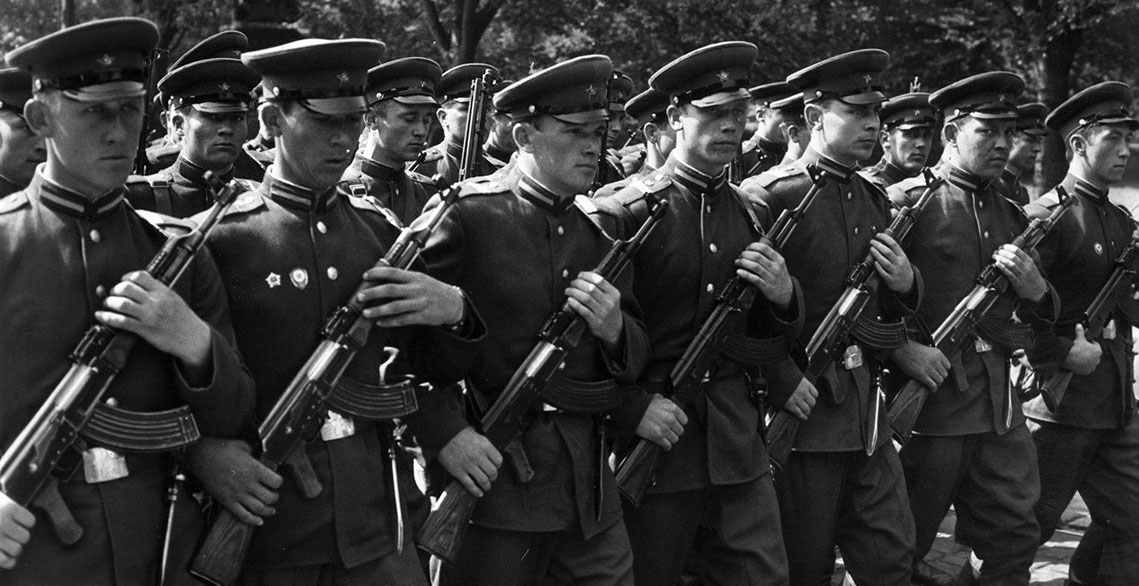
Czech students distribute underground literature in Wenceslas Square, Prague, in protest against the Soviet occupation of their country. | PHOTO BY REG LANCASTER/GETTY IMAGES
29th August 1968: Troops and crowds in Prague, Czechoslovakia, during the Russian invasion to crush communist reforms. | PHOTO BY REG LANCASTER/EXPRESS/GETTY IMAGES
10th September 1968: Soviet troops marching through the centre of Prague, Czechoslovakia, during the Prague Spring. | PHOTO BY REG LANCASTER/EXPRESS/GETTY IMAGES
1 - 3
<
>
FAQ
THE 1968 PRAGUE SPRING
*
*
The 1968 Prague Spring was a period of political liberalisation in Czechoslovakia during the era of its domination by the Soviet Union after World War II.
It began on January 5, 1968, when reformist Alexander Dubcek was elected First Secretary of the Communist Party of Czechoslovakia (KSC), and continued until August 21 when the Soviet Union and other members of the Warsaw Pact invaded the country to halt the reforms.
click to expand
INTERVIEW
“In Eastern Europe what you see at this time, particularly after 1968, is what was called in Czechoslovakia normalisation. In other words, the stagnation really of the political system. This is where our image of the communist period is grey and bleak and environmentally degraded really comes from, of Soviet society as being a kind of payoff where the rulers no longer try to make people believe in communist ideology, and the people just try and get by as best as they can.”
Dan Stone
WATCH
>
10th September 1968: Soviet troops march through Prague during the Prague Spring. | PHOTO BY REG LANCASTER/EXPRESS/GETTY IMAGES
People in Eastern Europe got by keeping to a strained status quo with the creaking communist authority.
For those in the West, getting by meant getting to grips with transformational change.
1960s
ECONOMIC BOOM AND MASS MIGRATION
N THE WEST
Return to top
ΝΕΧΤ:
1970s
OIL CRISIS & THE INITIAL BACKLASH TO IMMIGRATION

